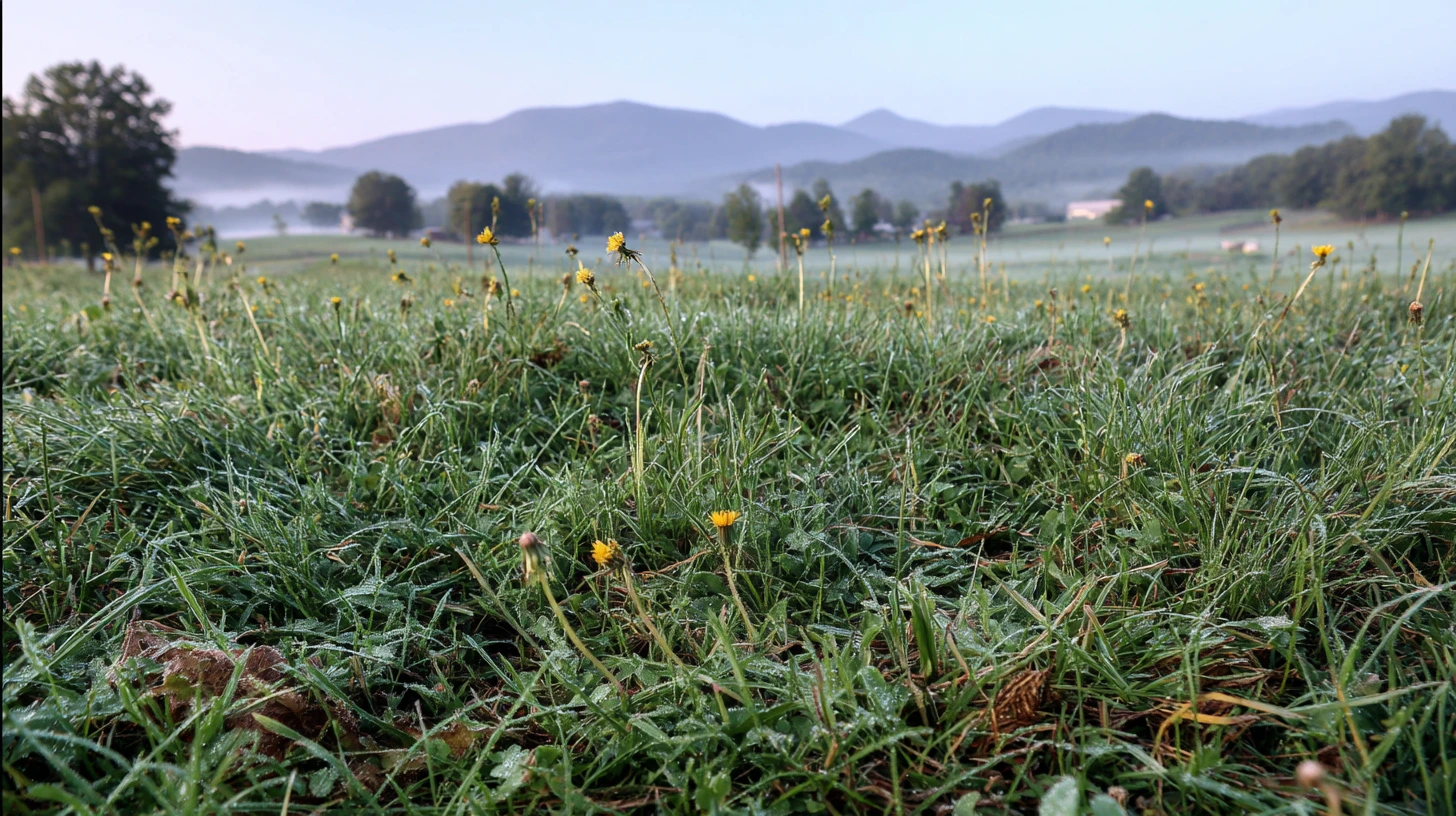East Tennessee Lawn Weeds: Identification & Control

Learn how to identify and tackle East Tennessee's most common lawn weeds--from dandelions to nutsedge--with seasonal strategies and expert tips.
East Tennessee Lawn Weeds: Identification & Control
Introduction
If you've spent a spring morning staring at rogue green patches in your fescue or zoysiagrass, you're not alone. East Tennessee lawn weeds come in all shapes--broadleaf, grassy, even those pesky sedges--and each one fights for space in your turf. As a seasoned turf coach, I've walked countless neighbors through the identification and control of common lawn weeds TN. By the end of this guide, you'll know exactly what's sprouting in your yard and how to tackle it at the right time of year.
We'll break down:
Lawn weed identification: Spotting differences between broadleaf weeds, grassy weeds, and sedges
Seasonal strategies: What to target in spring, summer, and winter
Control tactics: From cultural practices to pre- and post-emergent applications
Roll up your sleeves and let's turn your lawn into the healthy, thick carpet it was meant to be.
Common Lawn Weeds in East Tennessee
East Tennessee's transitional climate supports both cool- and warm-season invaders. Here are the major offenders.
Broadleaf Weeds TN
Dandelion (Taraxacum officinale)
Perennial with bright yellow flowers and white puffball seeds.
Forms a deep taproot--pull when soil is moist for cleaner removal.
White Clover (Trifolium repens)
Low-growing, trifoliate leaves, small white bloom clusters.
Thrives in under-fertilized turf.
Henbit (Lamium amplexicaule)
Square stem, scalloped leaves, purple tubular flowers in early spring.
Ground Ivy (Glechoma hederacea)
Creeping habit, round scalloped leaves, spikes of purple flowers.
Grassy Weeds East TN
Crabgrass (Digitaria spp.)
Summer annual with wide flat blades and finger-like seed heads.
Spreads as mats under hot, dry conditions.
Goosegrass (Eleusine indica)
Silver base, fingered seed clusters, survives compacted soils.
Dallisgrass (Paspalum dilatatum)
Coarse clumps, peppered seed heads, tough to eradicate once established.
Sedges (Cyperus spp.)
Yellow Nutsedge (Cyperus esculentus)
Triangular stems ("sedges have edges"), glossy yellow-green blades.
Prefers wet or poorly drained areas.
Causes and Contributing Factors
Understanding why weeds win the turf battle helps you lock them out:
Thin, stressed turf: Opens real estate for weed seeds.
Poor fertility: Invites nitrogen-hungry clover and dandelions.
Compacted or wet soils: Perfect for goosegrass and nutsedge.
Incorrect mowing height: Cutting too low weakens grass and favors sun-loving weeds.
Ready to transform your lawn?
Get personalized AI guidance for the perfect lawn. Download Grassmaster Gus now!
Identifying Weeds: A Step-by-Step Guide
Lawn weed identification comes down to a few key traits:
Leaf shape & vein pattern
Broad vs. parallel veins.
Stem structure
Round (grass), square (some broadleaf annuals), triangular (sedges).
Growth habit
Clumping vs. creeping vs. rosette-forming.
Flower characteristics
Color, shape, season of bloom.
Keep a simple chart or photo reference handy--University of Tennessee Extension - Turfgrass & Weed Management has great visuals.
Effective Weed Control Strategies
Cultural Controls
Mow at proper height: 3-3.5 inches for tall fescue, 2.5-3 inches for bermudagrass and zoysiagrass.
Fertilize smartly: Follow a soil test and apply slow-release nitrogen to discourage clover.
Aerate: Relieves compaction and strengthens root growth.
Manual Removal
Best for small patches of perennial broadleaf weeds.
Use a weeding tool to extract the entire root system, especially on moist days.
Selective Herbicides
Broadleaf formulas target dandelions, clover, and henbit without harming grass.
Always match the active ingredient to the species--label instructions matter.
Check local guidelines via the Tennessee Master Gardener Program.
Pre-Emergent Controls
Summer annuals (crabgrass, goosegrass): Apply pre-emergent when soil temperature hits 55 degreesF--often mid-March in East Tennessee.
Winter annuals (henbit, annual bluegrass): Fall applications (September-October) slow germination.
Prevention Strategies for a Healthy Turf
Overseed thin spots in early fall to outcompete weeds.
Maintain soil pH between 6.0-7.0--adjust with lime or sulfur as needed.
Water deeply, less frequently: Promotes deep grass roots over shallow weed roots.
Inspect regularly: Catch young weeds before they flower and set seed.
Timing and Application Guidelines
Spring (Mar-May): Pre-emergents for grassy weeds; spot-treat perennials and broadleaf weeds.
Summer (Jun-Aug): Focus on manual removal and post-emergent herbicides for crabgrass.
Fall (Sep-Nov): Overseed, fertilize, and apply winter annual controls.
Winter (Dec-Feb): Monitor for henbit in mild spells; plan pre-emergent in late fall.
Check your 7-day forecast--avoid herbicide applications 24-48 hours before significant rain.
Safety Considerations
Wear gloves, goggles, and long sleeves when handling chemicals.
Follow label directions for mixing rates and protective equipment.
Keep kids and pets off treated areas until products have dried or as specified on the label.
Protect non-target plants--use a shield or spot-spray technique.
Conclusion
You've got a clear path forward for East Tennessee lawn weeds--from savvy weed ID to season-by-season control strategies. Healthy turf starts with knowing your enemy: broadleaf weeds like dandelion and clover, grassy troublemakers such as crabgrass and dallisgrass, and sedges that thrive in soggy spots. Combine good cultural habits--proper mowing, fertilizing, and aeration--with targeted pre- and post-emergent treatments at the right times. Keep a close eye on your lawn throughout the year, and you'll nip most invasions in the bud.
Now grab your tools, mark your calendar, and show those weeds the exit door. A lush, weed-free yard in East Tennessee isn't a pipe dream--it's well within your reach.
Transform Your Lawn with AI-Powered Care
Join thousands of homeowners achieving their dream lawn with personalized guidance from Grassmaster Gus.
- AI-powered lawn analysis
- Personalized care schedules
- Expert advice 24/7
- Track lawn progress
